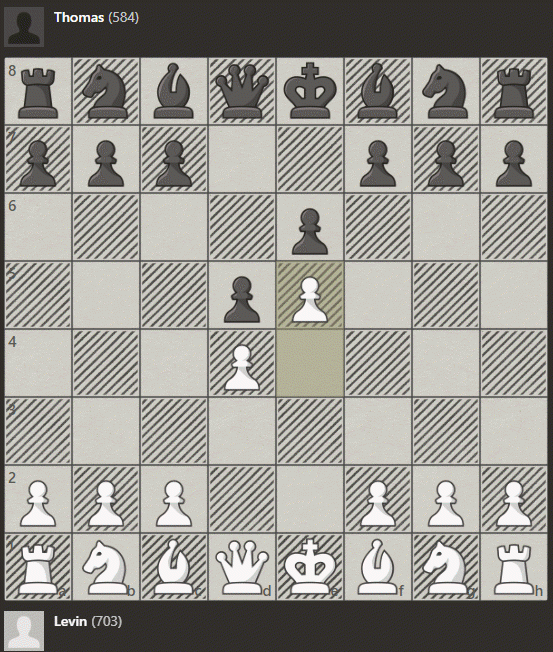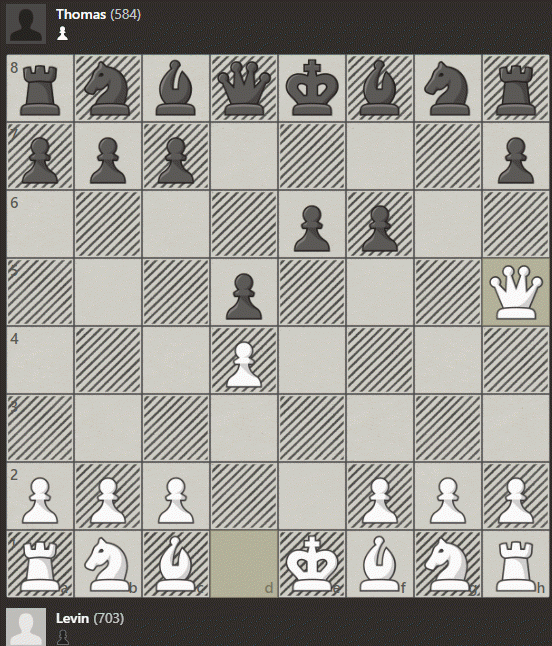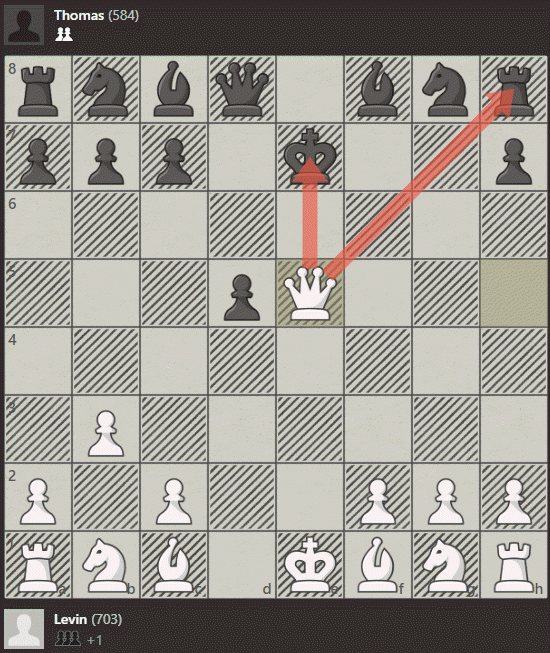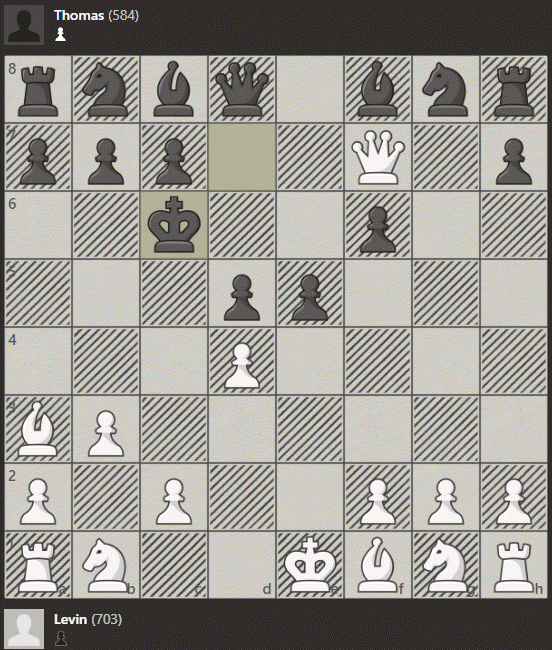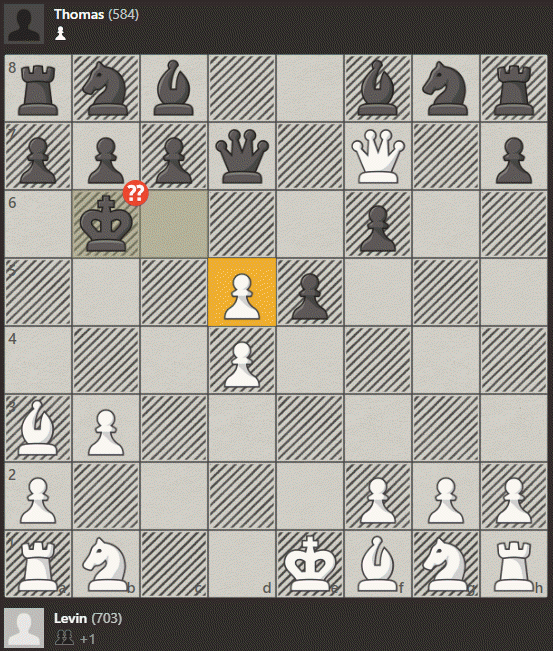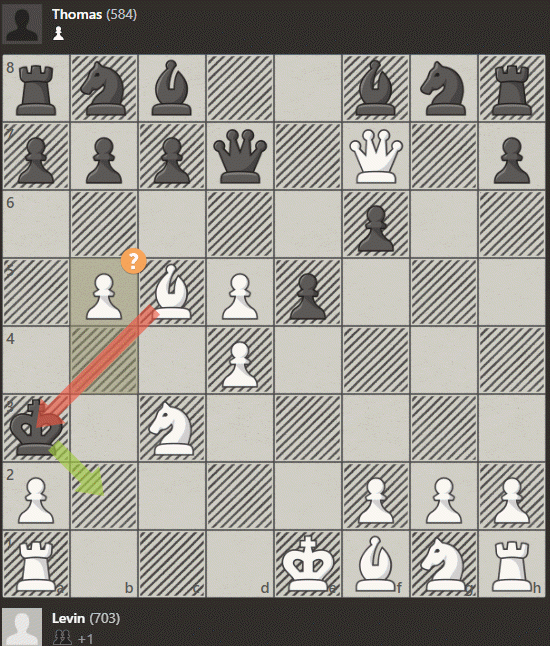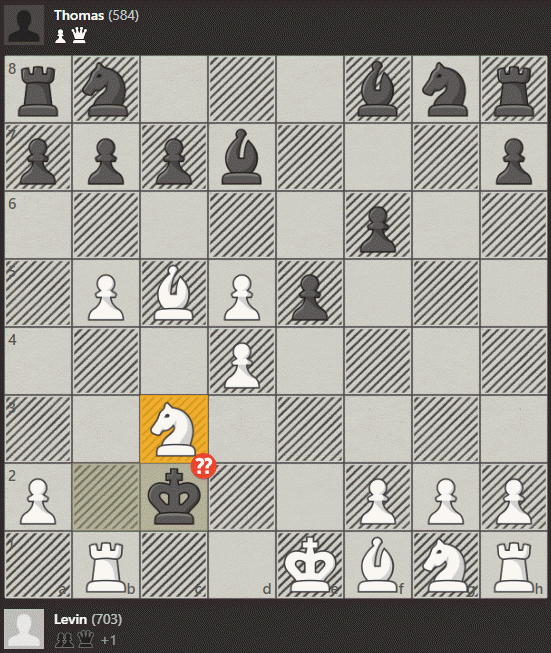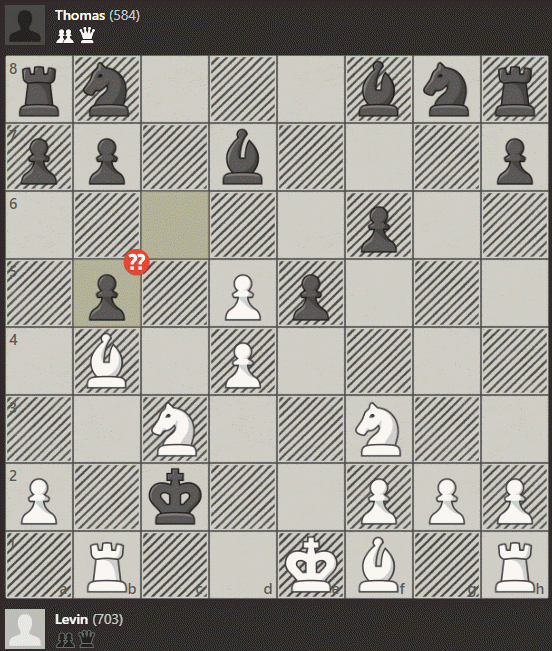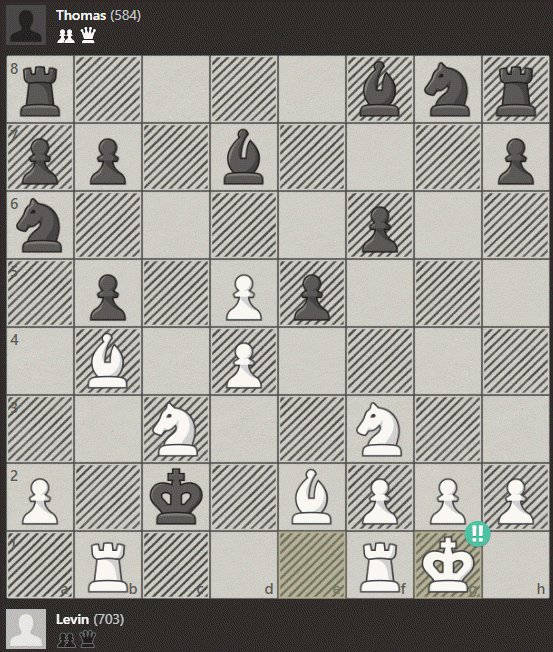During our tournament on March 11, 2025, Levin was paired as white against Thomas on board 1. I annotated the game so that I could discuss it with them afterwards, and I’ll share my notes on this game here. Notice that this will be most helpful if you follow along on a board of your own.
e4 e6 2. d4 d5 3. e5
This game began with as a French Defense, Advance variation; characterized by 3. e5. The mistake that essentially decided the game occurred right here. Black responded with 3…f6?
(The most common response to 3. e5 is 3… c5 for those of you wondering.)
Thomas had made the comment on a game he won the previous round, that he’s always looking for his opponent to weaken the diagonal his king is on, and that’s exactly what happened here. Levin swiftly took advantage of this mistake, ensuring first that the g-pawn could not interfere.
exf6 gxf6 5. Qh5+
From here, the danger is obvious, and Thomas’ king is doomed to take a walk.
5… Ke7 6. b3 e5 7. Ba3+
With 6. b3, it is clear that white intends to attack with the dark square bishop. However, black was responsive to that threat and played e5, making a flight square for the king. Instead of continuing with Ba3+ as white did here, it’s possible to be more productive.
(7. dxe5 fxe5 8. Qxe5+)1
Notice that after this exchange white is winning a rook. Because of this threat, black cannot take the pawn on e5 which means white would be up material as well as having a lot of initiative. In either case, white is clearly winning. If you’re not able to tell that white is winning, I suggest this other post where I explain how to determine Who's winning.
7… Kd7 8. Qf7+ Kc6
A few alternatives:
(8… Ne7 I believe this is the response that prevents the most damage, but Black is still in a lot of trouble. 9. Qxf6 Rg8 10. dxe5)
(8… Be7 9. Bxe7 (9. Qxd5+ Bd6 10. c4 Qe7 11. c5) 9… Nxe7 (9… Qxe7 10. Qxd5+) 10. Qxf6)
Continuing with the game as played…
c4 Qd7 10. cxd5+ Kb6??
Kb6 is a serious mistake here. Remember the ABCs of getting out of check, here black should really have considered “C”apture.
(10… Qxd5 11. Qxf8 Qe4+ 1. Be2 Bg4 13. Qc5+ Kd7 Now black has a lot of counterplay and there aren’t any useful checks.)
Bc5+ Ka5 12. b4+ Ka4 13. Nc3+ Ka3 14. b5+?
A clever discovered check, but it allows black to fork the knight and rook to which white has no good response.
14… Kb2! Thomas finds the tactic. Nice!
15. Qxd7 Bxd7 16. Rb1+ Kc2??
(16… Kxc3 17. Bb4+ Kc2 18. Nf3 White dreams of getting the knight to c1)
After missing the free material, black’s defeat is all but inevitable at this point.
Bb4 c6 18. Nf3 cxb5?? This is a blunder because now the idea of O-O followed by Rfc1# can no longer be stopped.
Be2 Na6 20. O-O!! As Levin commented during the game, his opponent cannot actually take the bishop! A sacrifice IM Eric Rosen would be proud of and a great find!
20… Nxb4 21. Rfc1#
If you’d like to follow along with this game using chess.com’s analysis board, you can do that here: Levin v. Thomas. You can also find other games I’ve analyzed there.
This analysis, as well as membership to The Rookery is, and will always be free. However, if you’re interested in supporting the club, the best ways to do so are to subscribe to this substack, or to use our affiliate link to get a membership on chess.com which you can do here: www.chess.com. Proceeds from both will be used to buy boards, pieces, clocks, batteries etc. and are greatly appreciated!
If you found any mistakes in my analysis, found any lines interesting, or have any questions, please feel free to comment below!
If you know someone who would find this post interesting, send it to them! You’re probably right!
Notice the parentheses here. I’ll use this to show a line that did not occur in the actual game.


